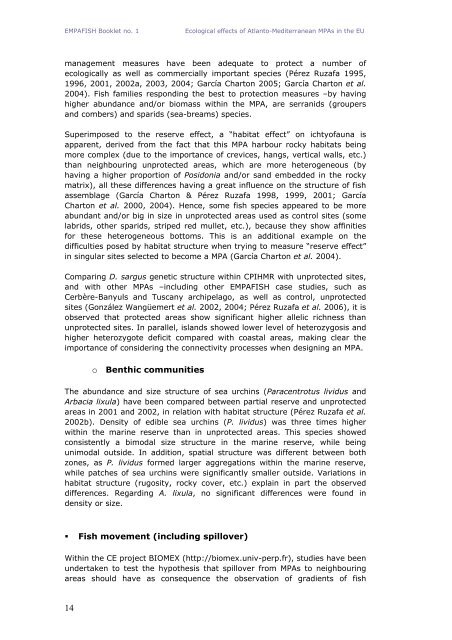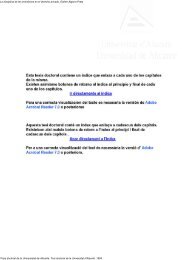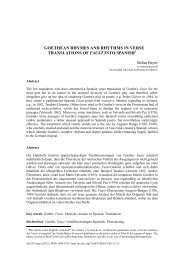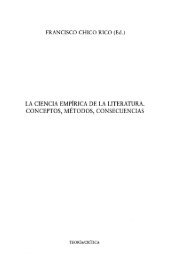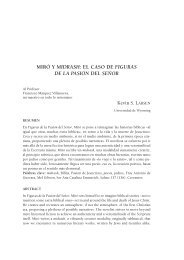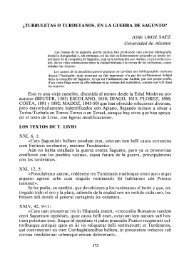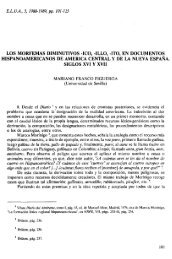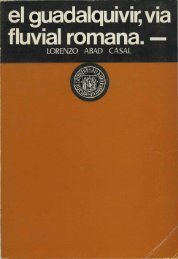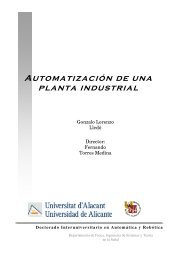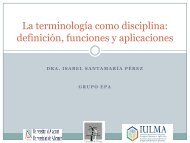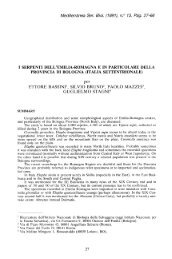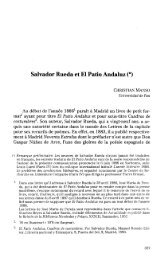ecological effects of marine protected areas empafish project ...
ecological effects of marine protected areas empafish project ...
ecological effects of marine protected areas empafish project ...
You also want an ePaper? Increase the reach of your titles
YUMPU automatically turns print PDFs into web optimized ePapers that Google loves.
EMPAFISH Booklet no. 1 Ecological <strong>effects</strong> <strong>of</strong> Atlanto-Mediterranean MPAs in the EU<br />
management measures have been adequate to protect a number <strong>of</strong><br />
<strong>ecological</strong>ly as well as commercially important species (Pérez Ruzafa 1995,<br />
1996, 2001, 2002a, 2003, 2004; García Charton 2005; García Charton et al.<br />
2004). Fish families responding the best to protection measures –by having<br />
higher abundance and/or biomass within the MPA, are serranids (groupers<br />
and combers) and sparids (sea-breams) species.<br />
Superimposed to the reserve effect, a “habitat effect” on ichty<strong>of</strong>auna is<br />
apparent, derived from the fact that this MPA harbour rocky habitats being<br />
more complex (due to the importance <strong>of</strong> crevices, hangs, vertical walls, etc.)<br />
than neighbouring un<strong>protected</strong> <strong>areas</strong>, which are more heterogeneous (by<br />
having a higher proportion <strong>of</strong> Posidonia and/or sand embedded in the rocky<br />
matrix), all these differences having a great influence on the structure <strong>of</strong> fish<br />
assemblage (García Charton & Pérez Ruzafa 1998, 1999, 2001; García<br />
Charton et al. 2000, 2004). Hence, some fish species appeared to be more<br />
abundant and/or big in size in un<strong>protected</strong> <strong>areas</strong> used as control sites (some<br />
labrids, other sparids, striped red mullet, etc.), because they show affinities<br />
for these heterogeneous bottoms. This is an additional example on the<br />
difficulties posed by habitat structure when trying to measure “reserve effect”<br />
in singular sites selected to become a MPA (García Charton et al. 2004).<br />
Comparing D. sargus genetic structure within CPIHMR with un<strong>protected</strong> sites,<br />
and with other MPAs –including other EMPAFISH case studies, such as<br />
Cerbère-Banyuls and Tuscany archipelago, as well as control, un<strong>protected</strong><br />
sites (González Wangüemert et al. 2002, 2004; Pérez Ruzafa et al. 2006), it is<br />
observed that <strong>protected</strong> <strong>areas</strong> show significant higher allelic richness than<br />
un<strong>protected</strong> sites. In parallel, islands showed lower level <strong>of</strong> heterozygosis and<br />
higher heterozygote deficit compared with coastal <strong>areas</strong>, making clear the<br />
importance <strong>of</strong> considering the connectivity processes when designing an MPA.<br />
14<br />
o Benthic communities<br />
The abundance and size structure <strong>of</strong> sea urchins (Paracentrotus lividus and<br />
Arbacia lixula) have been compared between partial reserve and un<strong>protected</strong><br />
<strong>areas</strong> in 2001 and 2002, in relation with habitat structure (Pérez Ruzafa et al.<br />
2002b). Density <strong>of</strong> edible sea urchins (P. lividus) was three times higher<br />
within the <strong>marine</strong> reserve than in un<strong>protected</strong> <strong>areas</strong>. This species showed<br />
consistently a bimodal size structure in the <strong>marine</strong> reserve, while being<br />
unimodal outside. In addition, spatial structure was different between both<br />
zones, as P. lividus formed larger aggregations within the <strong>marine</strong> reserve,<br />
while patches <strong>of</strong> sea urchins were significantly smaller outside. Variations in<br />
habitat structure (rugosity, rocky cover, etc.) explain in part the observed<br />
differences. Regarding A. lixula, no significant differences were found in<br />
density or size.<br />
� Fish movement (including spillover)<br />
Within the CE <strong>project</strong> BIOMEX (http://biomex.univ-perp.fr), studies have been<br />
undertaken to test the hypothesis that spillover from MPAs to neighbouring<br />
<strong>areas</strong> should have as consequence the observation <strong>of</strong> gradients <strong>of</strong> fish


